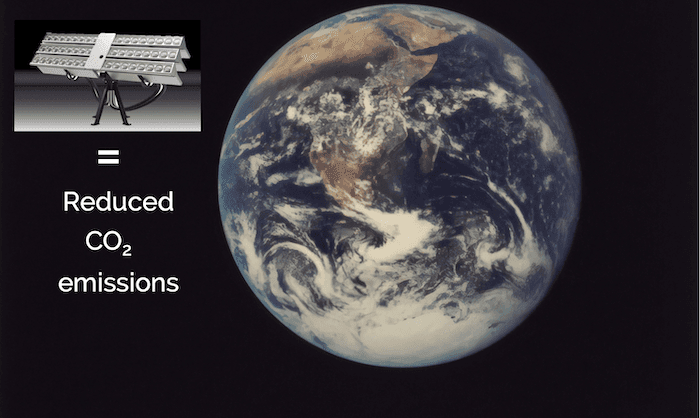The climate debate has probably not been as topic as now. UN Climate Action Summit in New York in September and upcoming COP25 in December are all driving the debate and increasing the awareness. Today, buildings and constructions are responsible for 39% of all carbon emissions in the world, which World Green Building Council ("WGBC") highlighted during World Green Building Week. WGBC's vision is to achieve 100% net zero emissions buildings by 2050. As stated more than 10 years ago by WWF and GlobalFOCUS, if we with Parans type of technology replaced 10% of the electric lights in every building in Europe, China and US, we could reduce CO2 emissions by 220 000 000 ton every year. We have been ready for many years now to reduce CO2 emission, how about you?

Urbanization and the Carbon Challenge
By 2050, it is estimated that two-thirds of the world’s population will live in urban areas. This densification of cities is contributing to an increase in carbon emissions occurring right now. Research from the Intergovernmental Panel on Climate Change (IPCC) emphasizes that achieving drastic cuts in all carbon emissions over the next decade is critical to limiting global temperature rise to 1.5°C.
A Call to Action for the Building Sector
The World Green Building Council’s report “Bringing Embodied Carbon Upfront”, released during World Green Building Week, calls for coordinated action across the building sector to radically change how buildings are designed, constructed, used, and deconstructed. Climate change is not just a governmental issue—it’s a collective responsibility for companies, NGOs, architects, designers, and manufacturers to limit the carbon footprint and achieve 100% net zero emissions by 2050. This requires collaboration on innovations, awareness, tracking embodied carbon, and creating supportive legislation. National initiatives, like the UK Green Building Council’s consultation on energy performance targets for offices, aim toward net zero. Tools such as the open-source Embodied Carbon in Construction Calculator (EC3), developed by the Carbon Leadership Forum with partners like Skanska Group and Microsoft, enable easy evaluation of building material emissions. Projects like the energy-positive Powerhouse Brattørkaia office building serve as inspiring examples.
Harnessing Daylight for Sustainability
We need to maximize the use of energy sources like the sun. This includes installing solar panels for power and designing buildings to optimize daylight and sunlight for indoor illumination. Innovative products and solutions play a key role in reducing our carbon footprint. Over a decade ago, WWF and GlobalFOCUS recognized Parans with the Climate Solver prize as one of Sweden’s top 12 climate innovators. A video from that time highlighted that replacing
Illuminate Your Space
Ready to brighten your space with natural light? Parans solar lighting system harnesses the sun’s power to transform indoor environments sustainably. With advanced fiber optic lighting, we deliver sunlight deep into buildings, enhancing well-being and cutting energy costs.
Get Started Today
Whether it’s homes, offices, or unique projects, our innovative solutions offer eco-friendly brilliance. Explore how fiber optic lighting can elevate your next design—visit our products or contact us at sales@paranslight.com for a personalized quote today! Let’s illuminate your world, naturally.

